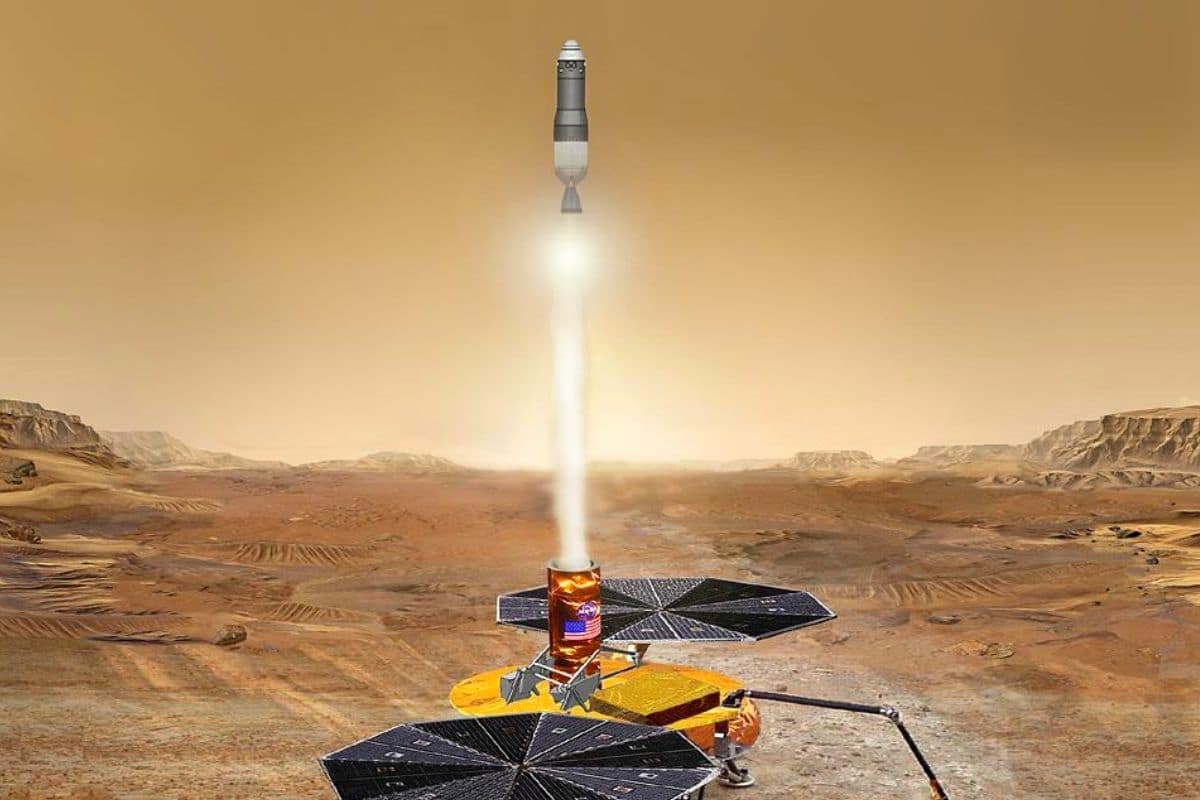
The rocket should go down in the books as the first rocket launched from an alien surface.
Mars rover Perseverance has been busy for months sampling the Martian surface and rocks resting on that surface. The collected samples are carefully stored in hermetically sealed vials that will be returned to Earth for analysis at a later stage. While scientists can’t wait to put those samples under the microscope, the so-called Mars Sample Return Mission still future music for the time being. But the mission is getting closer, as evidenced by the fact that NASA has now commissioned Lockheed Martin to develop a rocket that will carry the collected samples from the Martian surface.
First
As it stands now, the rocket is going to make history; it will be the first-ever rocket launched from a planet other than Earth. At such a historic moment you might expect an immense rocket, but that is not the case. It will be a small, lightweight rocket, NASA says, because otherwise it will not fit in the space to be built by NASA Sample Retrieval Lander†
Lander, rover, orbiter
This one Sample Retrieval Lander is an important part of the Mars Sample Return Mission and will be the lightweight rocket – also referred to as the Mars Ascent Vehicle (or simply: MAV) – take to Mars. After the lander lands in or near Jezero Crater – home to Mars rover Perseverance – a small rover (the Sample Fetch Rover) that will pick up the monsters collected by Perseverance. The rover then transports the monsters to the lander, which then serves as a launch pad. From the lander, the Lockheed Martin-built Mars Ascent Vehicle the Mars monsters in orbit around Mars, where they are picked up by the Earth Return Orbiter† That orbiter then sets course – with the Mars samples on board – towards Earth.

The Mars Sample Return mission involves quite a few robots. First of all, of course, Perseverance (left). In addition, the Sample Retrieval Lander (right) with the Mars Ascent Vehicle on board. And then there’s the Sample Fetch Rover (center) and the Earth Return Orbiter (top right). Image: NASA/ESA/JPL-Caltech.
There’s work to be done
We are expected to welcome the first Mars samples to Earth sometime between 2030 and 2035. There is still a lot of work to be done before that happens. But part of that work is outsourced; Lockheed Martin has been commissioned it Mars Ascent Vehicle to design, develop and test. To this end, the company will not only design a rocket that will actually be launched from Mars, but also deliver various test rockets. NASA is prepared to allocate up to $194 million for this.

This tube shows off the very first Mars sample collected by Perseverance. The rover has already filled seven of these tubes in various places in the Jezero crater. And there are many more to come, the intention is: the rover has a total of 43 of these sampling tubes. Image: NASA/JPL-Caltech.
Lander and Rover
Meanwhile, NASA is working on the Sample Retrieval Lander which should be launched as early as 2026. The rover on board the lander is being developed by Airbus (on behalf of ESA). The same goes for the Earth Return Orbiter which should orbit Mars by the end of this decade.
Mars rovers such as Perseverance and predecessor Curiosity are quite advanced and can also provide more insight into the composition of the Martian surface thanks to a kind of mini-laboratory on board. It may raise the question of why so much money and time is invested in a mission aimed at bringing Mars monsters to Earth. The answer is simple: more is possible on earth. Scientists can study the Martian samples here using highly advanced techniques — far too complex to use in a rover — and learn so much more about the red planet.
Scientists can’t wait to receive the Mars samples and study them more closely. The samples — collected by Perseverance in a former river delta — are believed to have been cut to learn more about a time when Mars must have been much wetter, warmer, and may have even harbored life. It makes infinitely curious about the monsters Perseverance is already securing: might some actually harbor traces of (decayed) Martian life? Our patience will be tested for a while, but the time for the first samples deliberately collected on Mars to arrive on Earth is getting closer and closer.
Source material:
†NASA Selects Developer for Rocket to Retrieve First Samples from Mars” – NASA
Image at the top of this article: NASA / JPL